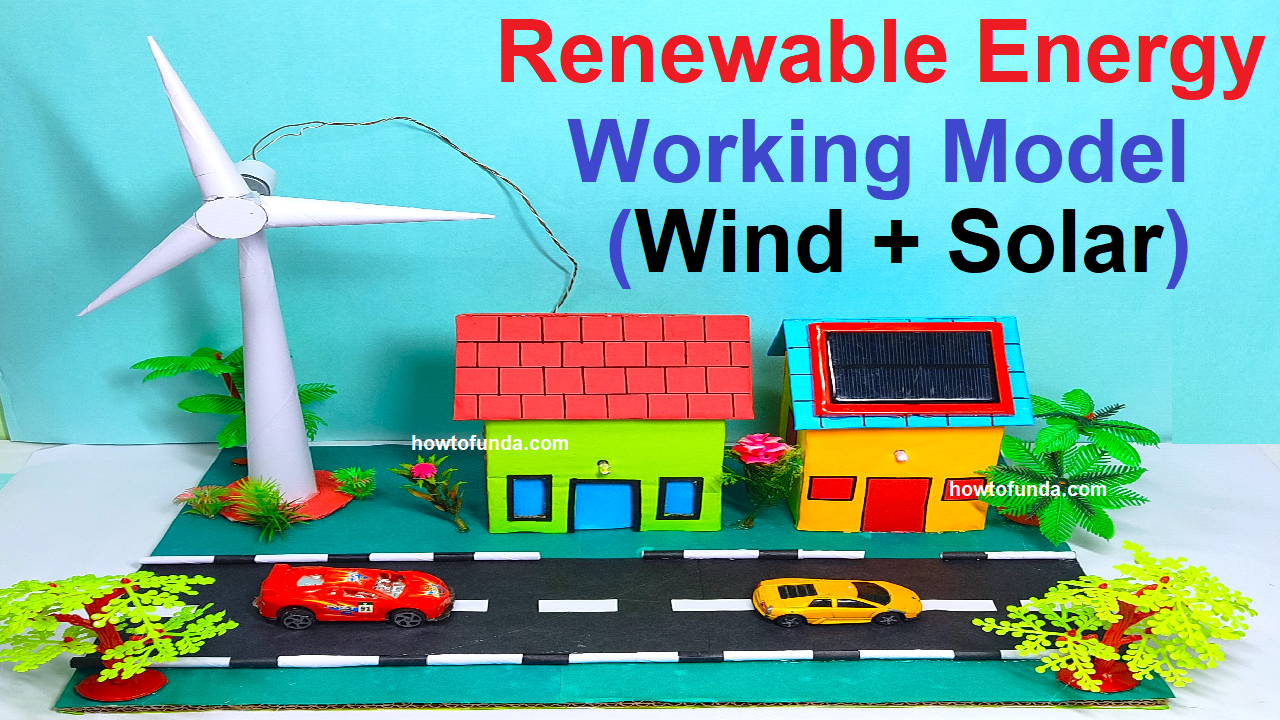A solar energy working model demonstrates how sunlight can be converted into usable electricity using solar panels, showcasing the process of photovoltaic energy generation. Solar energy is a clean and renewable energy source, and this model helps explain how it works and can be harnessed for practical use.

Key Components of the Model:
- Solar Panel (Photovoltaic Cells): The solar panel consists of photovoltaic (PV) cells that absorb sunlight and convert it into direct current (DC) electricity.
- Battery: The battery stores the electrical energy generated by the solar panel for later use.
- Charge Controller: A charge controller regulates the flow of electricity from the solar panel to the battery, ensuring the battery does not get overcharged or discharged too much.
- Inverter: The inverter converts the stored DC electricity into alternating current (AC) electricity, which is what most household appliances use.
- Wires and Connectors: Wires connect the components, allowing the flow of electricity between the solar panel, battery, charge controller, and inverter.
How It Works(Solar energy working model explanation):
- Absorption of Sunlight: When sunlight hits the surface of the solar panel, the photovoltaic cells inside absorb the sunlight and generate electrical energy in the form of direct current (DC) electricity.
- Electricity Flow to Battery: The generated DC electricity flows through the wiring and is stored in the battery. The charge controller ensures that the battery is charged efficiently and safely.
- Energy Conversion by Inverter: If AC electricity is needed, the inverter converts the stored DC electricity into AC electricity. This makes the energy compatible with devices that use standard electrical outlets.
- Powering Devices: The stored energy can then be used to power small devices, lights, or even larger appliances, depending on the size of the solar panel and battery.
Applications and Learning:
- Real-Life Insight: This model demonstrates how solar energy can be harnessed to provide clean electricity, which is useful in homes, schools, or even for off-grid applications.
- Educational Value: It helps explain the photovoltaic process, energy storage, and conversion of DC to AC power, giving a hands-on experience with renewable energy.
This solar energy model is a practical way to understand how solar panels work and the potential of solar power as a sustainable energy source.

